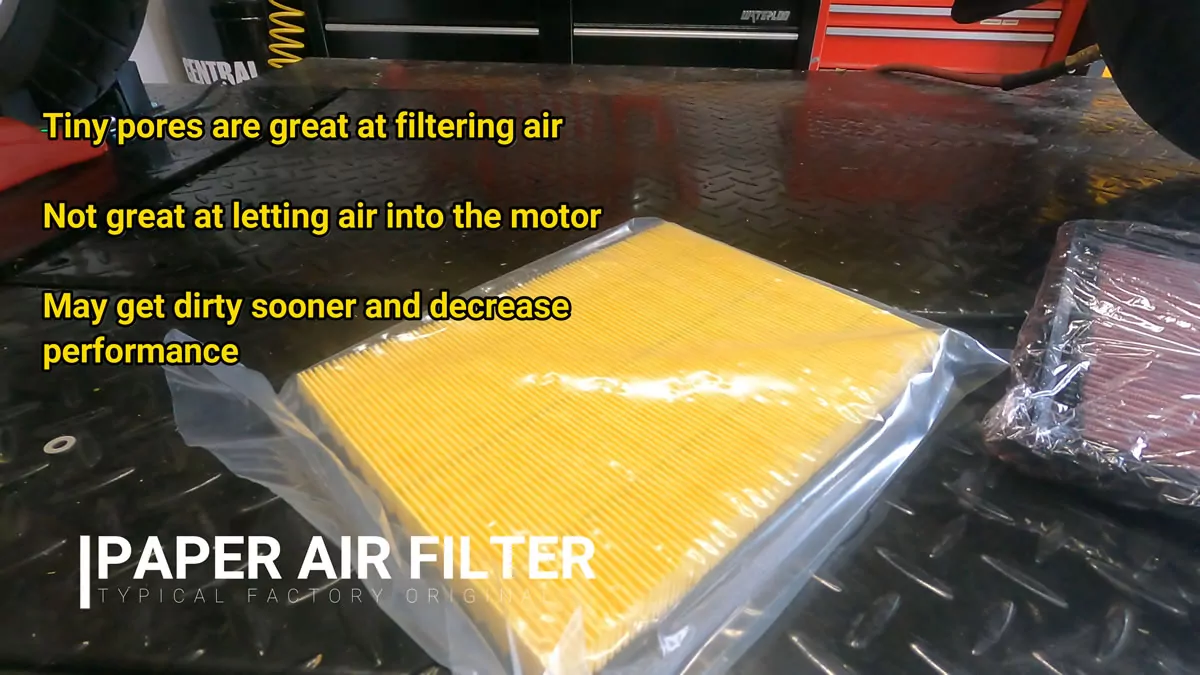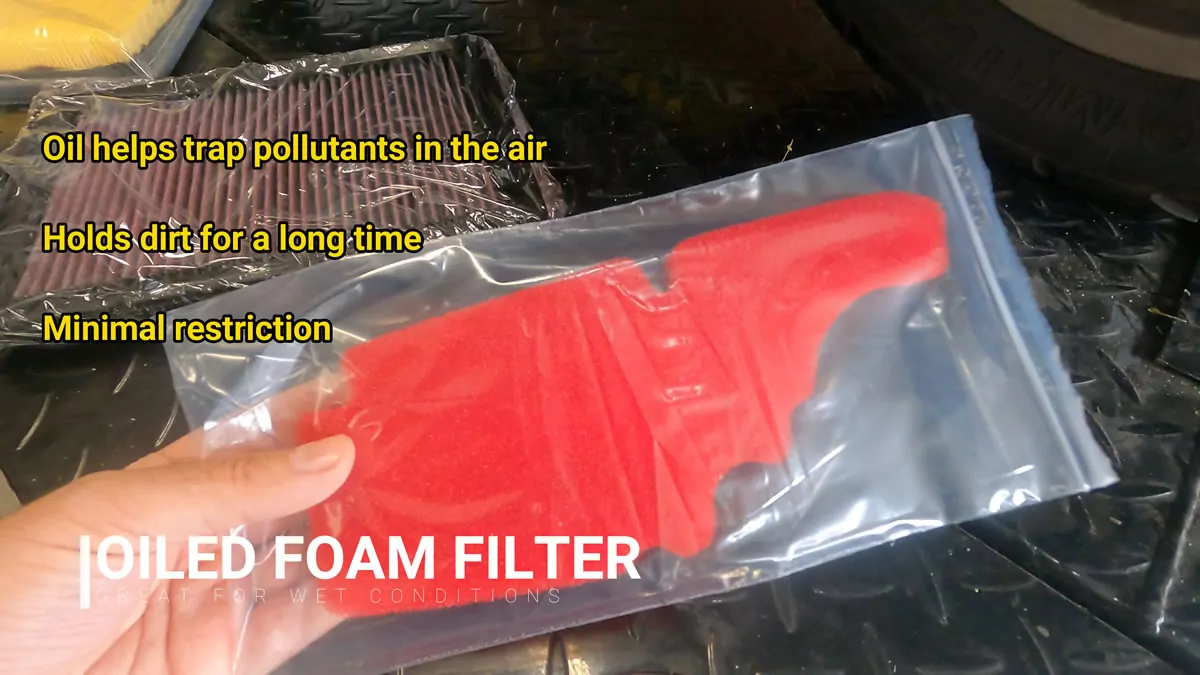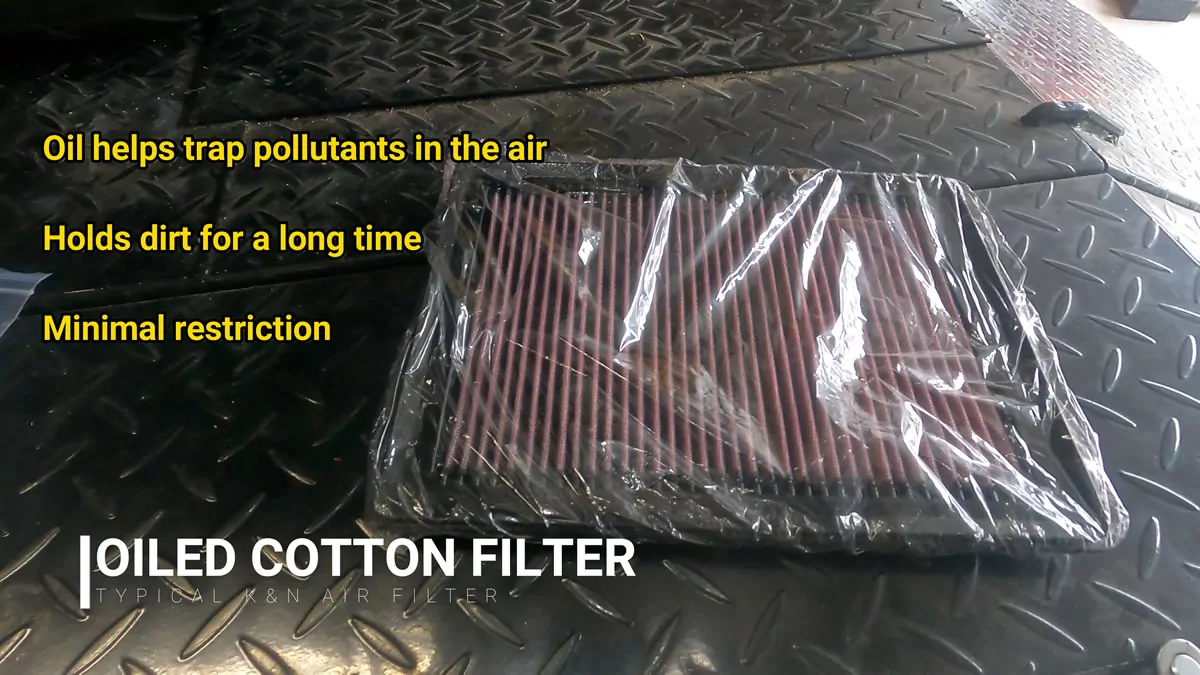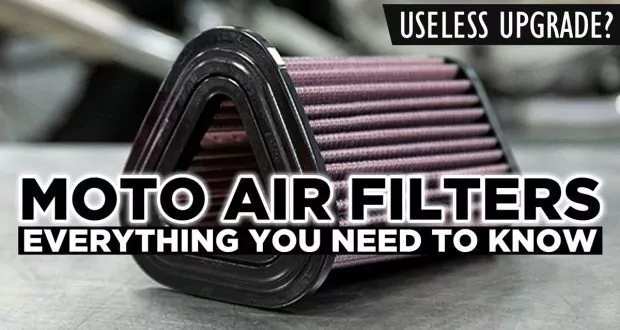Did you know some air filters for your motorcycle will come with a million mile warranty? Today we’ll cover everything you need to know about motorcycle air filters: what a motorcycle air filter does, how different motorcycle air filters work differently from one another, why a paper filter costs have the price of it’s K&N equivalent, and which air filter is actually best for your motorcycle.
Your motorcycle air filter’s job is to give your motor the air it needs for combustion, while ensuring that pollutants like dust, pollen, sand, and other particles aren’t making it into your motor. Different air filters achieve this in different ways, some use fabrics, others use materials coated with oil, and some can even be cleaned and reused. In this article we’ll go over everything you need to know about your motorcycle’s air filter.


What does a motorcycle air filter do?
Your motorcycle’s air filter has two main goals: to give the motorcycle the air it needs to for combustion so you can start riding, and to filter out the impurities in the air, to help keep your motor running at full power without breaking down.
Think of your motorcycle engine like an air pump: the more air it can get, the more power it can put to the wheels, so we want to feed our motorcycles as much air as we possible can. An air filter makes sure that your motorcycle gets the air it needs in a way that won’t damage your motor.
Does my motorcycle need an air filter?
If more air = more good, than why not get rid of the air filter, have less obstruction, and get more air? Well, it’s not just the quantity of air that matters, but the quality of air that matters as well.
More air alone won’t give better performance if the air is dirty. That’s where an air filter comes in. Clean air burns better than air full of dirt and other pollutants. Clean air leads to better and more complete burning, which means better motorcycle performance and better fuel efficiency. Clean air gives you more power for less gas. Literally more bang for your buck.
As an extra bonus, an air filter catching all of the pollutant dirt and debris in the air saves it from getting into your motor where it can cause damage to your internal engine components, shortening the lifespan of your motorcycle’s engine prematurely.

How do different motorcycle air filters work?
There are three main types of air filters, all working a little differently to juggle the trade off between getting as much air flow as we can, while at the same time blocking out the most pollutants. Essentially you have one filter for your vehicle, with two sets of competing responsibilities that are at odds with each other, and three different approaches to handling the problem.
OEM / Paper air filters: The first motorcycle air filter you’ll encounter in a new motorcycle are your OEM paper air filters that your motorcycle comes with from factory. The OEM paper filters have tiny pores which are great at filtering the air, but poor at allowing filtered air to get into your engine. Because they filter so much, the paper air filters can get dirtier sooner, taking away from your performance.
Many riders are perfectly happy to stay with the paper air filter their motorcycle came with and simply replace them with a new one from the manufacturer when the time comes.
Oiled foam air filters: The next air filter type is the oiled foam air filter. The foam is oiled which can help trap pollutants passing through the filter, and the foam can hold dirt for a long time while still allowing clean air to flow through without much restriction, making it popular for off-road use in dusty conditions.
I use an oiled foam filter in my Vespa because a foam filter will work even when wet or soaked with oil, but a soaked paper filter can’t and may cause your motorcycle to stall out. Vespas are known for spilling oil into their air box if they get knocked over. With a paper filter this would meant the scooter wouldn’t start again, but an oiled filter with lots of little channels for the air to pass through it’s no problem.

K&N / Oiled cotton gauze: The third type of motorcycle air filter we’ll be looking at is the oiled cotton gauze filter, most commonly known as the K&N air filter. The filter’s oil helps to catch and trap air pollutants, allowing it to hold a lot of dirt while still allowing air flow, meaning it’ll help with performance over a paper filter, while at the same time not compromising the air purity entering your motorcycle.
The best part of the oiled cotton gauze filter is that it can be washed, dried, and reused. So when it does come due for a cleaning, you can just spray it, let it sit, oil it, and put it back in. You don’t have to throw it out and go buy a new one.
Is the K&N air filter worth it?
A paper air filter can sometimes cost half the price of a reusable K&N performance air filter, so is the K&N filter worth it?
If all you want is an air filter that will give you good peace of mind, that sticks to the use-discard-replace formula the way consumerism intended, stick with a paper air filter. It’s the vanilla of air filters. It’s boring, but it works just fine.
If you want something a little bit more interesting, that can help with performance, last the rest of your vehicle’s lifespan, comes backed with K&N’s 10 year or one million-mile warranty, and you know it takes less time to spray some cleaner and wash an air filter than it does to go buy a new one, then get the K&N.
Of course, when you consider the fact that the K&N air filter can be used many times over, but a paper filter can’t, the K&N’s real cost goes down, not up. Essentially, you should make this decision based on your own personal preferences. On some motorcycles, and my daily driver truck, I like the K&N filter. On vehicles I don’t ride quickly, like my BMW 650GS dual sport, I’m fine with the paper filter until it’s time for replacing. Then we’ll see.

Which air filter type is best for your motorcycle?
We know an air filter’s job is to keep the bad stuff out, while letting as much clean air in. We know there are three different kinds of air filter that can do this, and they each work a little differently, so which one is best for your motorcycle? Truthfully, that will depend largely on application.
I’m not a fan of paper filters, but some people want to keep everything in their vehicle completely stock, and that’s totally okay. If you’re one of these people, the paper air filter is probably best for you.
Others, like me, enjoy the oiled cotton and gauze K&N filters. I can’t comment on whether or not I’m getting more overall horsepower, or just quicker throttle response which leads to better acceleration. Either way, it feels nice, so I like upgrading to K&Ns, and if you like crisper acceleration you might enjoy one of these filters as well.
When it comes to my Vespa, or to an off-road oriented vehicle, if I had one, I would strongly recommend considering an oiled foam filter. Oiled foam filters do a great job of dealing with being soaked with oil or water. They’re also great at still allowing air to pass through channels inside. the foam even if they’re quite dirty on the outside.
The most important thing is to understand how each of these air filters work, and how they work differently from one another, so that you can determine which one is right for you.
If you have any questions, please leave them in the comments section. If you found this article helpful, please feel free just to leave me a comment saying thank you, that always makes my day!
 YouMotorcycle Motorcycle Blog – Motorcycle Lifestyle Blog, MotoVlog, Motorcycle Reviews, News, & How-Tos
YouMotorcycle Motorcycle Blog – Motorcycle Lifestyle Blog, MotoVlog, Motorcycle Reviews, News, & How-Tos

I reckon it boils down to what you value – filtration or performance. OEM air filters are mostly designed to snag particles of 5 microns and larger. In the car world, Purolator and Wix aftermarket filters tend to ace that game (as of today). K&N and other oiled filters don’t quite match up; Project Farm found nearly 3000 particles per .01 cubic foot of air in their big particle test, compared to less than 150 for any paper filter. Wix and Purolator both aced it, passing 0 particles per cubic centimeter.
If you’re in for the long haul with a “forever bike,” one you won’t part with, paper filters are your go-to. But most folks don’t hang onto cars or bikes long enough to see ’em through to their golden years. So, many might lean towards more performance. Running a K&N won’t wreck the joint, but that extra silica might sneak into your oil through blowby, showing up in oil analysis and making things dirtier faster. No biggie if you’re diligent with oil changes.
Long story short, do what feels right for you.
K&N every time for me! I generally remove, clean (with the K&N Filter Cleaner pack of course) and refit my Dyna’s filter at the halfway point between services. Works for me! I have found the occasional dead Bee or Wasp trapped in the filter’s elements before, but always intact.
Thank you.
Thanks for making my day!
Digging the vids on batteries, fluids, and filters – stuff any regular rider can handle without hitting the shop. Solid info!